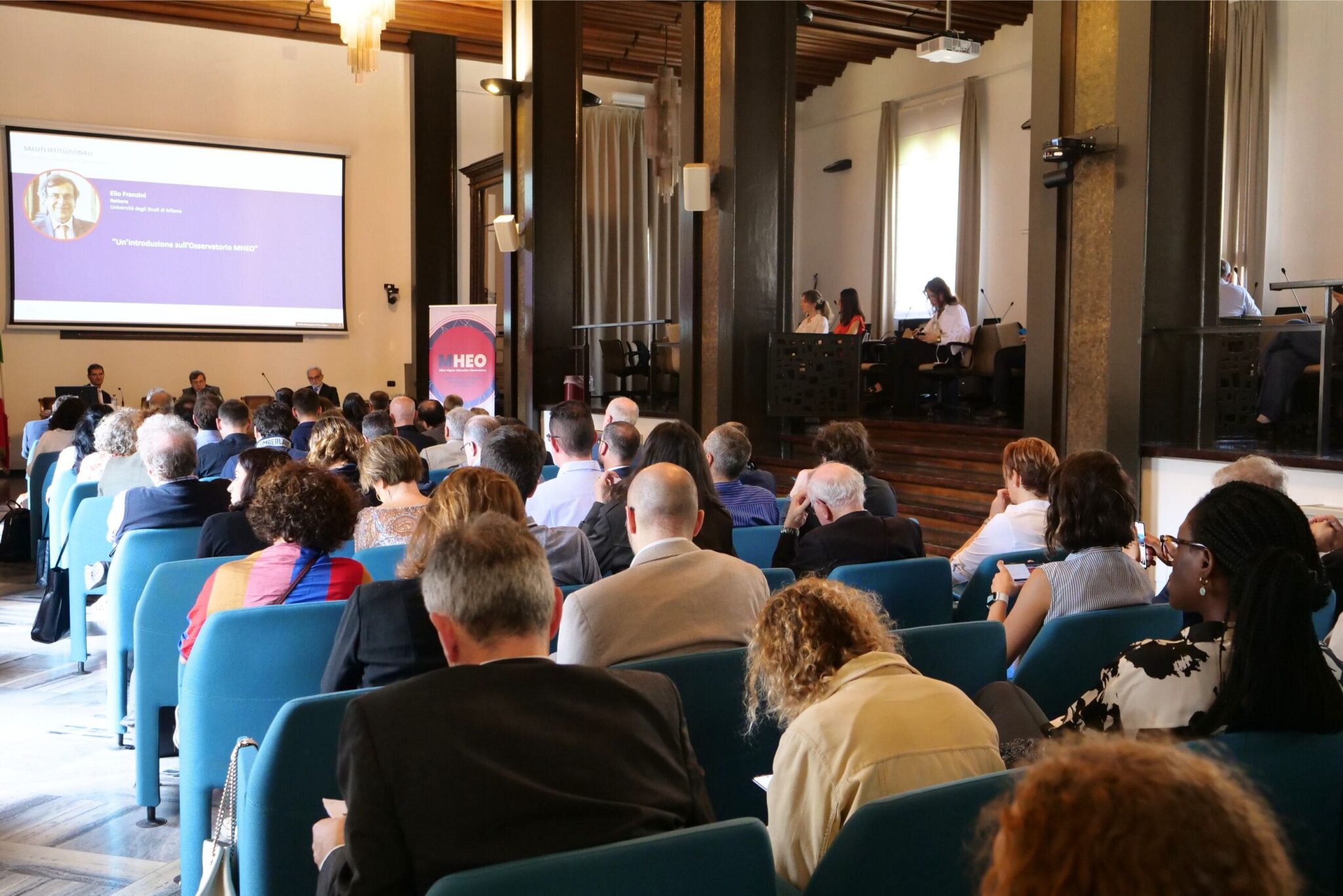One in three come from outside the region, 25% are foreigners. From China alone 1800 students
There are 65 institutions in all in Lombardy, an immense basin the size of Portugal. In detail, there are 15 universities, 26 Afam, from the Brera academy to the Conservatory, and 24 Its academies. And Milan is the one that stands out most in this context. It is the leading Italian city in terms of the number of university students, a good 211,000.
This is the balance of the first MHEO (Milan Higher Education Observatory) report, ‘Dimensions, dynamics and attractiveness of tertiary higher education in Milan and Lombardy’, published by Milano University Press.
A snapshot of the Observatory led by the Scientific Director and UniMi Full Professor Matteo Turri, which is part of the MUSA (Multilayered Urban Sustainability Action) innovation ecosystem and which aims to foster greater awareness among citizens, institutions, businesses, public and private bodies on tertiary education and its transformations in Milan and Lombardy.
Some curious data stand out in the report. The universities in Milan have the same number of enrolments as all the universities in Ireland, and only here are there more closed-entrance courses than open-entrance ones (only one in four). A cap on admissions often due to the lack of infrastructure, which on the one hand makes it possible to select students, but on the other risks not accommodating potential demand in such a large and articulated system. University students from outside the region account for 30% and 11% are foreigners, a figure that reaches 25% in the Afam, where 1,800 students arrive from China alone. Not only that, in the higher artistic, musical and dance training diplomas, the most significant increases – between 2015 and 2021 – were those of students from Romania (over 121%) and Spain (73.7%).
Another fact highlighted in the report is that Lombardy is the only Italian region to have at least one ITS Academy for each technological area and in all five areas of the New Technologies for Made in Italy area. Being relatively recently established institutions (in fact 2010), ITSs are still in their initial expansion phase, with very high rates of increase from one year to the next, but relatively small absolute numbers. Enrolment trends in Milan, Lombardy and the rest of the country indicate a clear positive trend for ITS, which is not experiencing the setbacks or fluctuations seen in AFAM institutions and universities. Significant is the growth of Lombardy’s ITS. Even the Metropolitan City of Milan has gained space in the region over the last decade, rising from just over 10% of enrolled students to almost 30%.
According to the researchers led by Professor Turri, students are concentrated in the large capitals: 40% of three-year degree enrolments and 48% of enrolments in master’s degrees are in five cities – Milan, Rome, Naples, Turin and Bologna – and this explains the housing problem. Another reflection suggested in the report is on the growth of telematic universities – Covid has been an accelerator – which nationally have overtaken non-state universities in terms of the number of graduates, and in Lombardy in 2021-2022 the top four universities in terms of enrolments are Statale, Cattolica, Politecnico and e-Campus. For the non-telematic universities, a comparison is needed on distance learning, perhaps one can be more courageous, the demand for a telematic channel to train is growing, especially for master’s courses.
On the gender distribution, it is noted, in 2022 more women than men were enrolled in the universities of Lombardy’s capital, and the quota is maintained at graduate level. This figure should be seen in the context of a general scenario in which the number of women enrolled, matriculated and graduated in Milan, in Lombardy and in Italy is still over 50% of students. However, despite the progress made, there are still many challenges to be met to ensure effective gender equality in all areas. For example, women are often underrepresented in certain academic disciplines or in leadership positions within companies and institutions.
The observatory was set up at Statale, and at the university they emphasise: “It collaborates with the university consortium Cineca and Deloitte and has a team of twenty researchers from different areas, from economics and education to data science and sociologists. It is part of Musa, an innovation ecosystem within the Education and Research Mission of the NRP. New analyses are planned, on the characteristics of those who enrol in telematics. And the next reports will be on student services and the right to study, job opportunities, gender issues, dialogue between universities and business, development and innovation.
By means of reports and multimedia content, the observatory aims to raise awareness on the issues of tertiary education and the social economic development of the territories through the exploitation of data and collaboration with various institutions. The distinctive element of the project is the production of reports for the city of Milan and its metropolitan area with a focus on the dissemination of research results. The added value of the reports will be in the extraction and exploitation of data, obtained in collaboration with various institutions.





